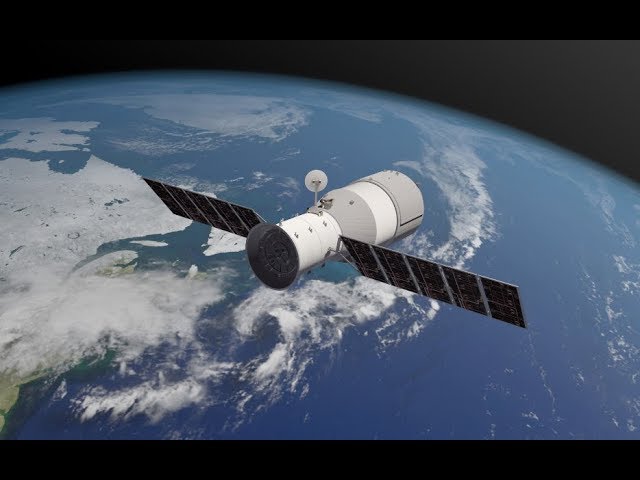The Chinese space station Tiangong-1 is tumbling back to Earth after become inoperable and may make its fiery impact early Easter Sunday. Space.com reports that Aerospace Corp., which is tracking the orbital fall of the space station, has estimated the crash to occur between March 31 and April, with an emphasis on 10:00 a.m. EST.
Tiangong-1, colloquially known as “Heavenly Palace,” was launched as China’s first prototype space station serving as both a manned space laboratory and an experimental vehicle to demonstrate orbital docking capabilities. It was built to serve as base on which a larger, multi-module space station was to be constructed in the 2020s.
In March 2016, Tiangong-1 ceased communication with its mission control center in Beijing, marking the end of the China Manned Space Engineering Office (CMSEO) mission. As it has become space junk, due to its location in low-Earth orbit is has succumb to the planet’s gravitational pull, leading it back to Earth.
The space station is expected to fall somewhere between the latitudes of 42.7 degrees north and 42.7 degrees south, a range that empresses the border of South Dakota and Nebraska in the north and Tasmania in the south. However, scientists claim the cannot accurately predict the location of impact for Tiangong-1.
The 9.4-ton, school bus-size space lab is tumbling, making it nearly impossible for analysts to determine the effects atmospheric drag has on its trajectory.
“It is tumbling,” Roger Thompson, a senior engineering specialist with Aerospace Corp., reportedly said. “We have been able to confirm that there is a tumble, we just can’t tell the orientation.”
Although the orbital decay of Tiangong-1 can be measured, variations in density in the upper layers of the atmosphere and the exact mass and material composition of the space station as it breaks apart cannot be determined. Nevertheless, Aerospace Corp. says a clearer path of re-entry will be determined hours before it makes contact with the ground.
The Chinese state-run news agency, Xinhua, says, “There is no need for people to worry about its re-entry into the atmosphere. It won’t crash to the Earth fiercely, as in sci-fi movie scenarios, but will look more like a shower of meteors.”
Most of the space debris will burn up on re-entry. Many claim that the odds are minimal that it will make landfall in a densely-populated area.
Aerospace Corp. has released a fact sheet that states the chances of being struck by debris from Tiangong-1 are less than 1 in a trillion.

